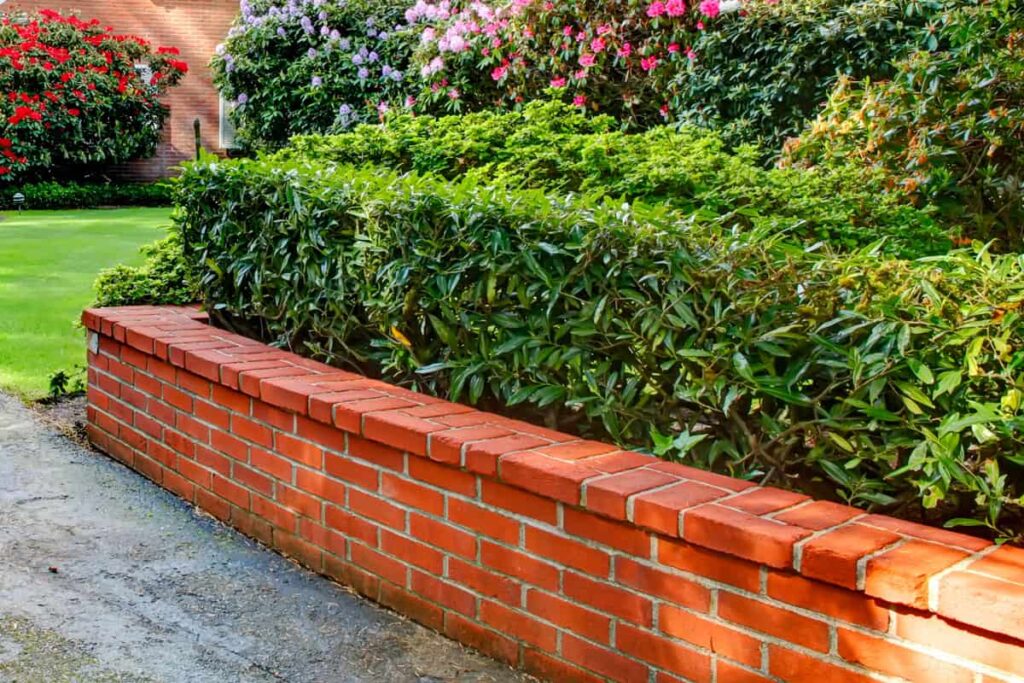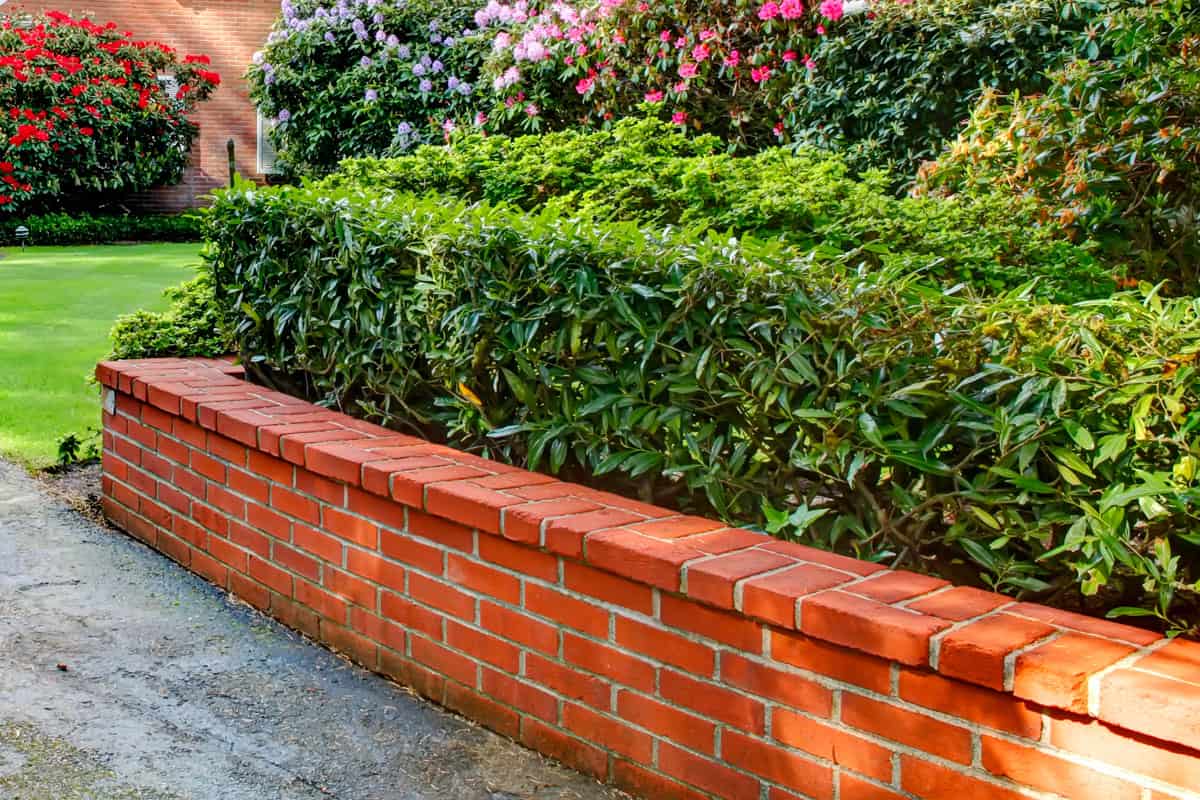
Landscaping with Brick: A Comprehensive Guide to Design, Installation, and Maintenance
Landscaping with brick offers a timeless appeal and unparalleled versatility for homeowners seeking to enhance their outdoor spaces. From classic pathways and patios to durable retaining walls and elegant garden borders, landscaping brick provides a robust and aesthetically pleasing solution. This comprehensive guide will explore the various aspects of landscaping brick, including design considerations, installation techniques, maintenance tips, and the benefits of using brick in your landscape. We’ll delve into how landscaping brick can transform your yard into a stunning and functional outdoor haven.
Why Choose Landscaping Brick?
Before diving into the specifics, let’s examine why landscaping brick is such a popular choice among homeowners and landscape professionals alike. Several key advantages make it a compelling option:
- Durability: Brick is incredibly durable and can withstand harsh weather conditions, foot traffic, and the test of time. Properly installed landscaping brick can last for decades.
- Aesthetics: With a wide range of colors, textures, and sizes available, landscaping brick offers endless design possibilities. It can complement any architectural style and add a touch of elegance to your outdoor space.
- Low Maintenance: Compared to other materials like wood or concrete, landscaping brick requires minimal maintenance. Regular sweeping and occasional cleaning are usually sufficient.
- Versatility: Brick can be used for a variety of landscaping projects, from simple pathways to elaborate patios and retaining walls. Its versatility makes it a valuable material for any outdoor project.
- Sustainability: Brick is often made from natural materials and can be recycled, making it an environmentally friendly choice.
Design Considerations for Landscaping Brick
Planning is crucial for any landscaping brick project. Consider the following design factors before you begin:
Purpose and Function
Determine the primary purpose of your landscaping brick project. Will it be a pathway, a patio, a retaining wall, or a garden border? Understanding the function will guide your design choices and material selection.
Style and Aesthetics
Choose a brick style that complements your home’s architecture and personal preferences. Consider the color, texture, and size of the brick. Common brick styles include:
- Standard Brick: The most common type of brick, typically red or brown in color.
- Paver Brick: Designed specifically for paving applications, often thicker and more durable than standard brick.
- Tumbled Brick: Brick that has been artificially aged to give it a more rustic and weathered appearance.
- Clay Brick: Made from natural clay and fired at high temperatures, offering excellent durability and color retention.
Pattern and Layout
The pattern in which you lay your landscaping brick can significantly impact the overall look of your project. Common patterns include:
- Running Bond: A simple and classic pattern where bricks are offset by half their length in each row.
- Herringbone: A more intricate pattern where bricks are laid at a 45-degree angle to each other.
- Basket Weave: A pattern that resembles a woven basket, with alternating pairs of bricks laid horizontally and vertically.
- Circular Pattern: Used for creating patios or focal points, with bricks arranged in concentric circles.
Scale and Proportion
Ensure that the scale of your landscaping brick project is appropriate for the size of your yard and the surrounding landscape. A large patio may overwhelm a small yard, while a small pathway may get lost in a large garden. Consider the proportions carefully to achieve a balanced and harmonious design.
Installation Techniques for Landscaping Brick
Proper installation is essential for the longevity and stability of your landscaping brick project. Follow these steps for a successful installation:
Preparation
Before laying any brick, prepare the site by excavating the area to the desired depth. Remove any vegetation, rocks, and debris. Compact the soil thoroughly to create a stable base.
Base Layer
Install a base layer of gravel or crushed stone to provide drainage and prevent the brick from settling. The thickness of the base layer will depend on the soil type and the expected load. Typically, a 4- to 6-inch base layer is sufficient.
Sand Bed
Spread a layer of sand over the base layer to create a smooth and level surface for the brick. Use a screed board to level the sand and ensure a uniform thickness. A 1-inch layer of sand is usually adequate.
Laying the Brick
Carefully lay the landscaping brick in your chosen pattern, leaving a small gap between each brick. Use a rubber mallet to gently tap the brick into place. Check the level frequently to ensure that the surface is even.
Edging
Install edging around the perimeter of your landscaping brick project to prevent the brick from shifting and to provide a finished look. Edging can be made from various materials, including plastic, metal, or concrete.
Joint Sand
Fill the gaps between the landscaping brick with joint sand to stabilize the brick and prevent weeds from growing. Sweep the sand into the gaps and compact it with a plate compactor or hand tamper. Water the sand to help it settle.
Maintenance Tips for Landscaping Brick
Landscaping brick is relatively low-maintenance, but regular care will help keep it looking its best. Here are some maintenance tips:
- Sweeping: Sweep the brick regularly to remove dirt, leaves, and debris.
- Cleaning: Occasionally clean the brick with a mild detergent and water to remove stains and algae. Avoid using harsh chemicals or abrasive cleaners, as they can damage the brick.
- Weed Control: Remove weeds that grow between the brick. You can use a weed puller, a herbicide, or boiling water to kill the weeds.
- Joint Sand: Replenish the joint sand as needed to keep the brick stable and prevent weeds from growing.
- Sealing: Consider sealing your landscaping brick to protect it from stains and weather damage. Sealing can also enhance the color of the brick.
Common Landscaping Brick Projects
Landscaping brick can be used for a variety of projects, including:
Pathways
Create inviting pathways through your garden or around your yard with landscaping brick. Pathways can be straight, curved, or winding, depending on your design preferences.
Patios
Build a beautiful and functional patio with landscaping brick. Patios can be used for outdoor dining, entertaining, or simply relaxing. Consider adding furniture, a fire pit, or a pergola to create a comfortable and inviting space.
Retaining Walls
Construct durable and attractive retaining walls with landscaping brick. Retaining walls can be used to prevent soil erosion, create level areas, or add visual interest to your landscape.
Garden Borders
Define your garden beds and add a touch of elegance with landscaping brick borders. Borders can be used to separate different areas of your garden, create raised beds, or simply add a decorative element.
Driveways
While more intensive, landscaping brick can also be used to create durable and visually appealing driveways. This requires careful planning and installation due to the heavier loads involved. Paver bricks are often the best choice for driveway applications.
Cost Considerations for Landscaping Brick
The cost of landscaping brick can vary depending on the type of brick, the size of the project, and the installation method. Consider the following cost factors:
- Brick Cost: The price of brick can range from a few dollars per brick to several dollars per brick, depending on the style, color, and quality.
- Installation Cost: If you hire a professional to install your landscaping brick, the cost will depend on the complexity of the project and the labor rates in your area.
- Materials Cost: You will also need to factor in the cost of materials such as gravel, sand, edging, and joint sand.
- Tools and Equipment: If you are doing the installation yourself, you may need to purchase or rent tools and equipment such as a shovel, a compactor, a screed board, and a rubber mallet.
Finding the Right Landscaping Brick Supplier
Choosing the right supplier is crucial for ensuring the quality and availability of your landscaping brick. Look for a supplier with a wide selection of brick styles, competitive prices, and a good reputation. Consider checking online reviews and asking for recommendations from friends or neighbors.
Conclusion
Landscaping brick offers a durable, versatile, and aesthetically pleasing solution for enhancing your outdoor spaces. By carefully considering design factors, following proper installation techniques, and providing regular maintenance, you can create a beautiful and functional landscape that will last for years to come. Whether you are building a pathway, a patio, a retaining wall, or a garden border, landscaping brick is an excellent choice for adding value and beauty to your property. Explore the possibilities and transform your yard into the outdoor oasis you’ve always dreamed of.
[See also: Patio Design Ideas]
[See also: Retaining Wall Construction]
[See also: Garden Pathway Materials]

